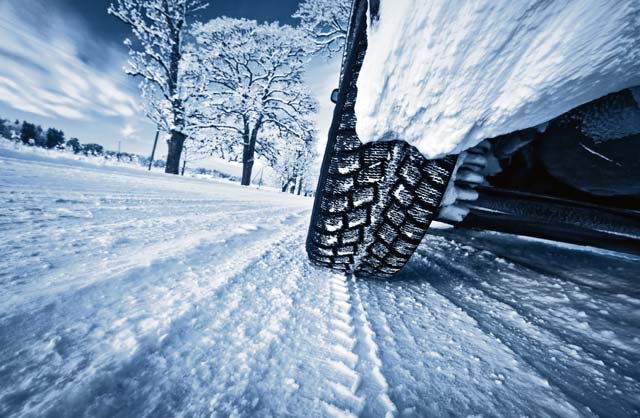
As winter approaches, days shorten and temperatures begin to drop. Service members commuting to work may experience hazardous road conditions brought on by reduced lighting and freezing temperatures.
To help mitigate the increased safety risks, motorists should properly prepare their vehicle for winter driving conditions.
The team at the 86th Vehicle Readiness Squadron would like to pass on the following tips:
• Don’t warm up your car in a closed garage or enclosed space.
• After it snows, remove snow from your vehicle before driving. Also, don’t forget to clear the snow from any lights and mirrors, as well as the windshields.
• Ensure you have a working rear defroster. If you have an older vehicle with an inoperative rear defroster, have it repaired.
• Ensure your tires are properly inflated. Tire pressure drops with temperature, so if the last time you checked your tire pressure was during the summer months, your tires may be dangerously low. This could affect your car’s handling.
• Ensure you have a serviceable, properly inflated spare tire and that you have the proper tire changing equipment (lug wrench and jack) in your vehicle. Most cars come with a spare tire in the trunk, when was the last time you checked it?
• Ensure your wipers are operational and in good condition. During winter months, you’ll likely use your wipers more frequently to clear the windshield. Worn out wipers don’t perform well while driving in snow, further compromising your already reduced visibility.
• Ensure your windshield wiper reservoir is full. During snowy and icy conditions, you’ll use more washer fluid. It’s important to use a good de-icer washer fluid that is engineered to work at below-freezing conditions to melt the frost or light ice that builds up.
• Dress for winter. When making a quick trip to the store, you may not feel the need to grab a heavy winter coat or a pair of gloves. You’re probably thinking, “I’ll be inside my car with the heated seats. I’ll only have to bear the cold walking from the parking lot to the store front.” However, if you were to get into an accident or become stuck on the side of the road for any reason, the coat and gloves will be instrumental in keeping you warm.
• Have basic supplies in your car. Ice scrapers and snow brushes are a must, but also consider an extra jacket, pair of gloves, winter hat, blanket, flash light and the mandatory first aid kit. A bag of kitty litter or sand may also come in handy if you find yourself stuck; pour a little in the path to help your tires gain traction.
• Have a cell phone handy. Never leave home without it, but also take the time to program it with any numbers you anticipate needing in an emergency.
• Check the weather before making long trips. If the weather report predicts poor conditions, consider delaying your trip or taking an alternate route.
• Slow down. Even with anti-lock brakes, stability control, snow tires and all-wheel drive your car will still not handle and grip the road as well as in dry conditions. Accelerate slower, brake slower, turn slower and leave more distance between you and the other cars on the road. Remember it will take longer to stop in slippery conditions.
• Don’t use cruise control. When driving in snow or wet conditions, this could delay the time it takes for you to brake in an emergency.
• Be careful when crossing bridges. Bridges and overpasses freeze first, so be prepared to encounter icy patches when crossing exposed roadways.
• After a snowfall, consider staying off the road until it’s cleared. If you live on base, the priority will be the airfield, so it may be a while before the housing areas and secondary streets are cleared of snow. Consider walking to work if feasible.
• Ensure you have snow or all-season tires. German law requires vehicles have winter tires when driving under icy conditions. A winter tire is specifically one with a mud and snow (M+S) label or the three peaks/snow flake symbol. The law does not set a time limit, but does state “under icy conditions.” Since it’s difficult to predict the weather, it’s a good rule of thumb to put winter tires on your vehicle around October and leave them on until at least Easter. Winter tires should have a tread depth of at least three millimeters.
• German law requires passenger cars to be equipped with snow tires or chains in certain mountainous areas. These areas are marked with traffic signs. At some mountain passes, chains may be rented. The maximum speed while driving a vehicle with chains is 50 kph (31 mph).
• Snow tires with spikes or studs are not allowed in Germany. If only two snow tires are used, they must be mounted on the drive wheels. Four-wheel-drive vehicles must have the snow tires mounted on the rear wheels. Radial snow tires may only be used with regular radial tires. Bias-ply snow tires may only be used with regular bias-ply tires.
Take the time now to prepare for the colder months ahead. Germany has a beautiful winter landscape. If you plan on traveling in the upcoming months, plan your route of travel, and make sure to take inclement weather and road conditions into consideration.







